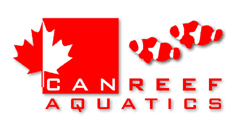
 |
|
#1
|
||||
|
||||
|
Who is using aqua forest reef salt and what is your thoughts about it?
|
|
#2
|
||||
|
||||
|
I switched from reef crystals, overall I'm happy:
Alk is pretty consistent between batches, hovering around 7.7-8, not the lottery that RC seemed to be. Boxes seem more readily available too, but their buckets are an odd size and the lid is kind of a pain to remove. There's also far less sludge/residue after mixing and storing it for a couple days, if that matters. Some people are stating they've had cyano / dinoflagellate issues after switching, not entirely sure what would be causing that though. |
|
#3
|
|||||
|
|||||
|
I've been using it for a couple of years. I really like it.
|
|
#4
|
||||
|
||||
|
Quote:
__________________
This and that. |
|
#5
|
|||||
|
|||||
|
Ive switched to af reef salt and had major cyano and dino issues. 2 water changes with instant ocean and dinos / cyano is gone and my corals arnt getting smothered anymore....
Sent from my SM-G930W8 using Tapatalk |
|
#6
|
||||
|
||||
|
I have been reading of a few people having diatom cyano problems with using aqua forest reef salt also. I just picked up 2 pails after reading a bunch of great reviews, and am now second guessing my choice.
|
|
#7
|
|||||
|
|||||
|
I'm with you on the issues. Here is to hoping that by switching back to RC from AF that I get rid of the slime and my corals stop getting smothered.
__________________
300g Basement Reef - April 2018 |
|
#8
|
|||||
|
|||||
|
That is exactly what I did, started nice and slow and wham-o got purple brown slime in LR. Then it got worse and dinoflagellates started and stringy goo was everywhere. I ended up losing 4 coral frags, a colony and some I'm not sure will pull through. May not be the same for everyone but It was very disheartening for me and not worth the lower parameters.
__________________
300g Basement Reef - April 2018 |
|
#9
|
||||
|
||||
|
That sounds awful....sorry for the loss. Nothing worse then battling Dino cyano, might just stick with RC. Maybe someone will want to trade me 2 pails of AF reef salt for RC.
Thanks for sharing your experiences everyone. |
|
#10
|
|||||
|
|||||
|
It's just like anything in this hobby, every tank responds different. I initially made the switch to AF eager as I had heard nothing but good things. Since my experience I have saw similar circumstances posted with using the AF Reef Salt so now it seems more then a coincidence.
__________________
300g Basement Reef - April 2018 |